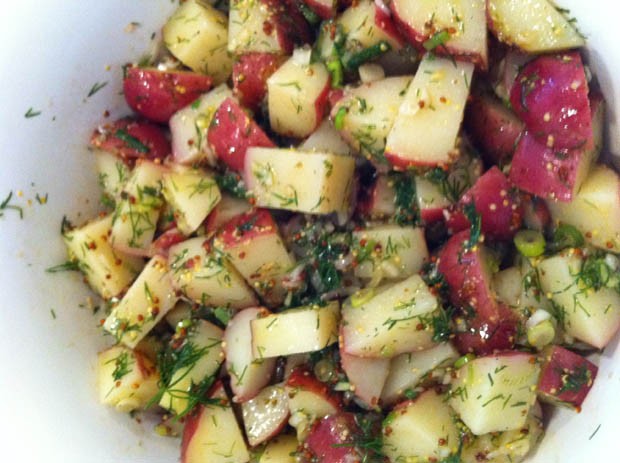Potatoes are a gluten free form of carbohydrate, especially important for people with a wheat sensitivity or Celiac’s disease. Depending on its starch content, potatoes serve different roles in the kitchen. For example, high starch potatoes (non waxy potatoes), are best for baking and mashing since they yield a fluffy interior. A russet or Yukon gold are examples of non waxy potatoes. Low starch potatoes (waxy potatoes), such as a fingerling potato, are great for potato salads since they hold their shape after cooking. Fingerlings also offer a rich earthy taste, lending itself nicely as a side to a roasted chicken or pot roast.
Whenever possible, leave the skin on to reap full benefits of the fiber potatoes have to offer. At a loss of how to eat a potato without running to the nearest fast food joint? Try boiling them until tender, cut into cubes, drizzle with olive oil, and sprinkle with cayenne and chili powder. Bake in a 350 degree oven until nice and crispy!



